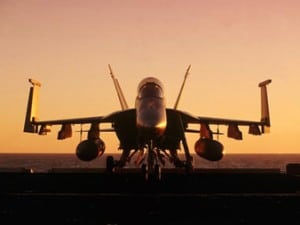
The Navy recently took delivery of the last Boeing [BA] Block II F/A-18E/F Super Hornet as it starts to transition to the Block III variant while the service awarded a contract to prepare for more life extension upgrades to existing aircraft. “Aircraft E322 will leave Boeing’s production line and head straight to Strike Fighter Squadron (VFA) 34 based in [Naval Air Station] Oceana,” Cmdr. Tyler Tennille from the Defense Contract Management Agency (DCMA) said in a statement. DCMA oversees Acceptance…

 By
By 











